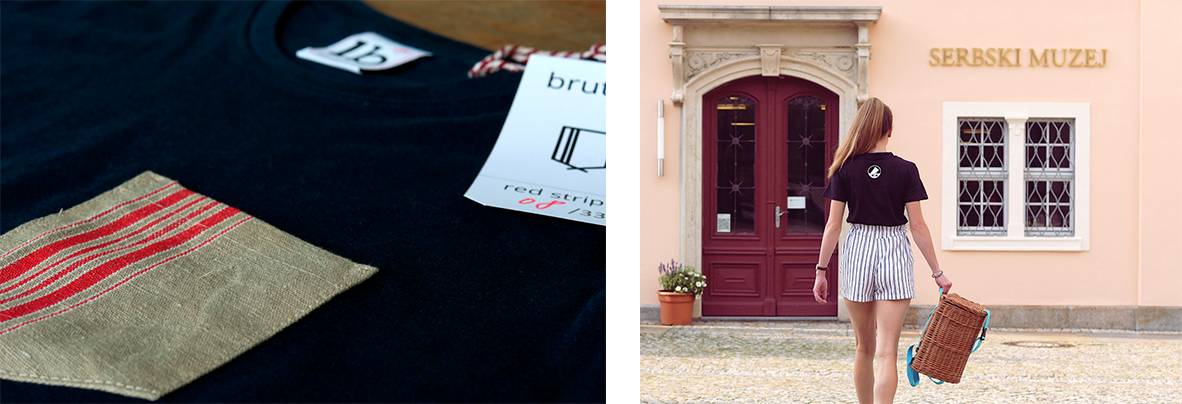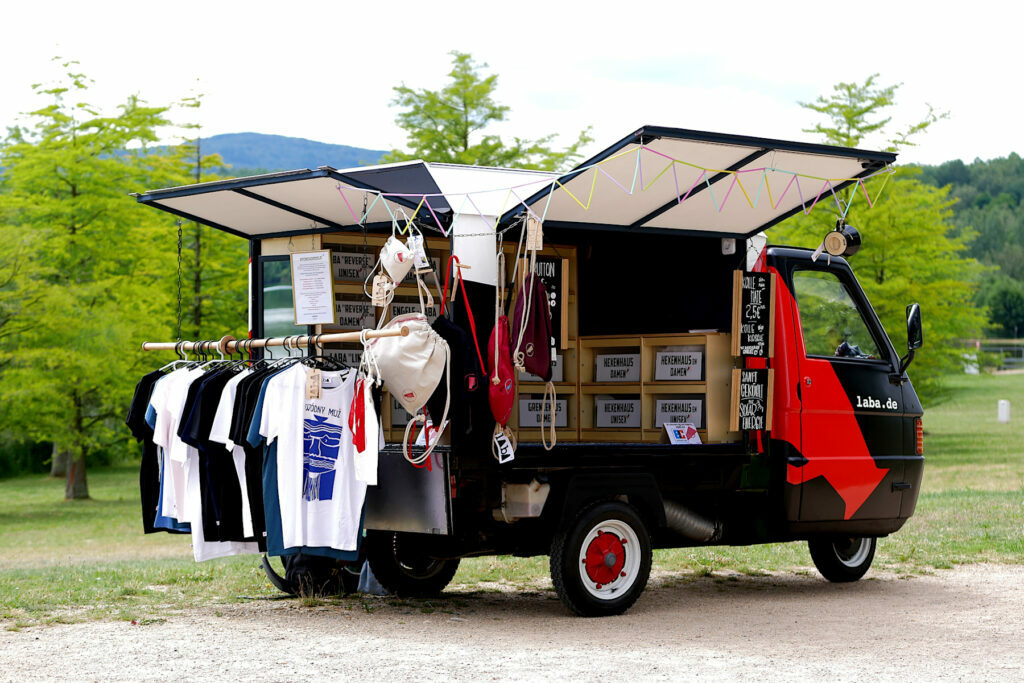
LABA - Sustainable Fashion from Upper Lusatia
LABA - Sustainable Fashion from Upper Lusatia
»Legendary Figures on the Waves of Fashion: LABA Fashion Connects Legends with Modern Design. Noon Witches, Pumphut, and other heroes become symbols of a new era. Explore how traditional stories and creativity come together to create captivating collections by this successful Upper Lusatian brand. Uncover the secrets behind the daring stories that are worn and journey with us into a captivating history and imaginative contemporary design. LABA Fashion - not just a fashion brand, but also an inspiration that blends the past with the present, pushing fashion to new heights.«
Gerhard Zschau sells stories to wear. While other fashion labels sell ordinary t-shirts, jogging pants, or caps, the clothing of the Görlitz-based label LABA features legendary figures such as Krabat, Pumphut, or the Noon Witch. What may seem like an odd combination at first glance – legends and fashion – has been a success story since 2016, as LABA connects traditional stories with modern design and storytelling, merging them with the present. The Noon Witch isn't portrayed as a thin old woman who questions to death those who work in the fields instead of taking a break during scorching midday heat; rather, she appears as a girl who could be referred to as a health and safety officer, if it weren't for the blood-spattered sickle in her hand. The Sorbian water sprite doesn't have green skin, nor is he dripping wet; instead, his face on LABA shirts is interwoven with the blue waves of the Lusatian pond landscape.
However, Gerhard Zschau doesn't consider Upper Lusatian legends to be outdated either: "These stories mostly revolve around how one treats people, especially workers, how they're treated, and whether they're fairly compensated. These are still relevant topics that have concerned Pumphut as well. He was something like the Krabat of Upper Lusatia and only turned malicious when his rightful wages were withheld from him."

The Riding Pumphut and the New Collection
The miller's apprentice Pumphut is one of the motifs from the new LABA collection. In contrast to modern interpretations of legendary figures, Gerhard chose a motif by Paul Sinkwitz for this purpose. The idea came to him during an exhibition about the artist from Ebersbach at the district office in Görlitz.
"As the son of a linen weaver, he grew up with the clatter of looms. It must have been incredibly loud, but maybe that's why his woodcuts are so striking. At first, I wanted to choose one where you see a weaver behind his loom, but that seemed too depressing to me. The work back then must have been tough."
In the end, he settled on a woodcut depicting Pumphut riding through the air on a grasshopper. "The image isn't that clear-cut; everyone can interpret their own story alongside the original. A guy with an absurdly large hat and a rod in his hand flying on a grasshopper over the village. It's hard to get much trippier than that."
The rights to the older motifs, such as those by Paul Sinkwitz or Rudolf Warnecke, were gladly granted by their heirs. "They find it nice that the works aren't forgotten but that someone comes along who's interested in them. They perceive it as a great appreciation."
History Lessons with LABA
The new motifs are created by young artists whom Gerhard finds, among other places, on Instagram. For instance, René Seidel from Löbau designed the blue carp; the Noon Witch was crafted by an artist from Berlin. The water sprite emerged from a design by Gerhard's girlfriend. Other designs came about incidentally while doodling at the kitchen table.
"Ideas just come to you here, in the bilingual Lusatia, almost effortlessly. The stories I find during my research are so interesting that I have to restrain myself from using citations and telling so much about the products that people can't find the Buy button amidst all the text. So, LABA isn't just a fashion label but also an educational event."
The ideas that spark in Gerhard's mind don't just relate to the design but also to the materials of LABA Fashion. In line with Pumphut's spirit, Gerhard ensures that all materials are ethically produced. Whenever possible, he uses local fabrics. Gym bags like "Walk The Linen" or "Nightliner" were all produced in a Neukirch linen factory. The chest pockets for the Brutani shirts, affectionately known as "chest pocket nickis," are made from fifty to sixty-year-old mangling cloth he found at flea markets in the region. Incidentally, the characteristic multi-colored stripes were originally used as boundary lines for the fabrics to be smoothed.

"Kiep It Real" - The Backpack from Upper Lusatia
Producing only t-shirts, jogging pants, or sweaters would be too boring for Gerhard. That's why there are always other products, such as the coffee filter bag. At some point, he came up with the idea for a backpack traditionally produced in Upper Lusatia. "I don't exactly remember how the idea came about, but suddenly the drawing appeared in my notebook and didn't let go of me." The shape of the backpack resembles a "kiepe," a type of basket used to carry brushwood, straw, or wood in the past. The backpack is woven by a basket maker from willow, which grows on his property in Milkel. The straps are made by a saddler from the neighboring village of Camina, and the carrying basket is lined with "Atlasgewebe," a semi-linen fabric produced using a special weaving technique. By March of last year, the backpack was nearly finished, then came Corona. Since then, the "kiepen" have been in storage, waiting to be completed.

LABA During Lockdown
The pandemic also disrupted other plans by Gerhard. The fashion truck, with which Gerhard wanted to travel through Upper Lusatia to showcase his products and engage in conversations with people over coffee, was halted by Corona. Nevertheless, Gerhard doesn't want to complain. "LABA is a lot of work but also a lot of fun. Fun in our own history, in creativity, and in craftsmanship."
This sentiment seems to be shared by LABA Fashion customers, as can be seen in the comments in the shop and on Facebook. They come not only from Upper Lusatia but from all over Germany and even Switzerland.
By buying from LABA, customers aren't just purchasing regional stories to wear but are also contributing to Upper Lusatia. Through sales, LABA supports organizations like Mission Lifeline, the Oberlausitzer Tafel, the Ganzmacher from Bautzen, or the Bahnhofsmission Görlitz.
You can find the new LABA collection here: https://shop.laba.de/produkt-s...
Stories about LABA and Upper Lusatia are posted by Gerhard on https://laba.de/blog/.